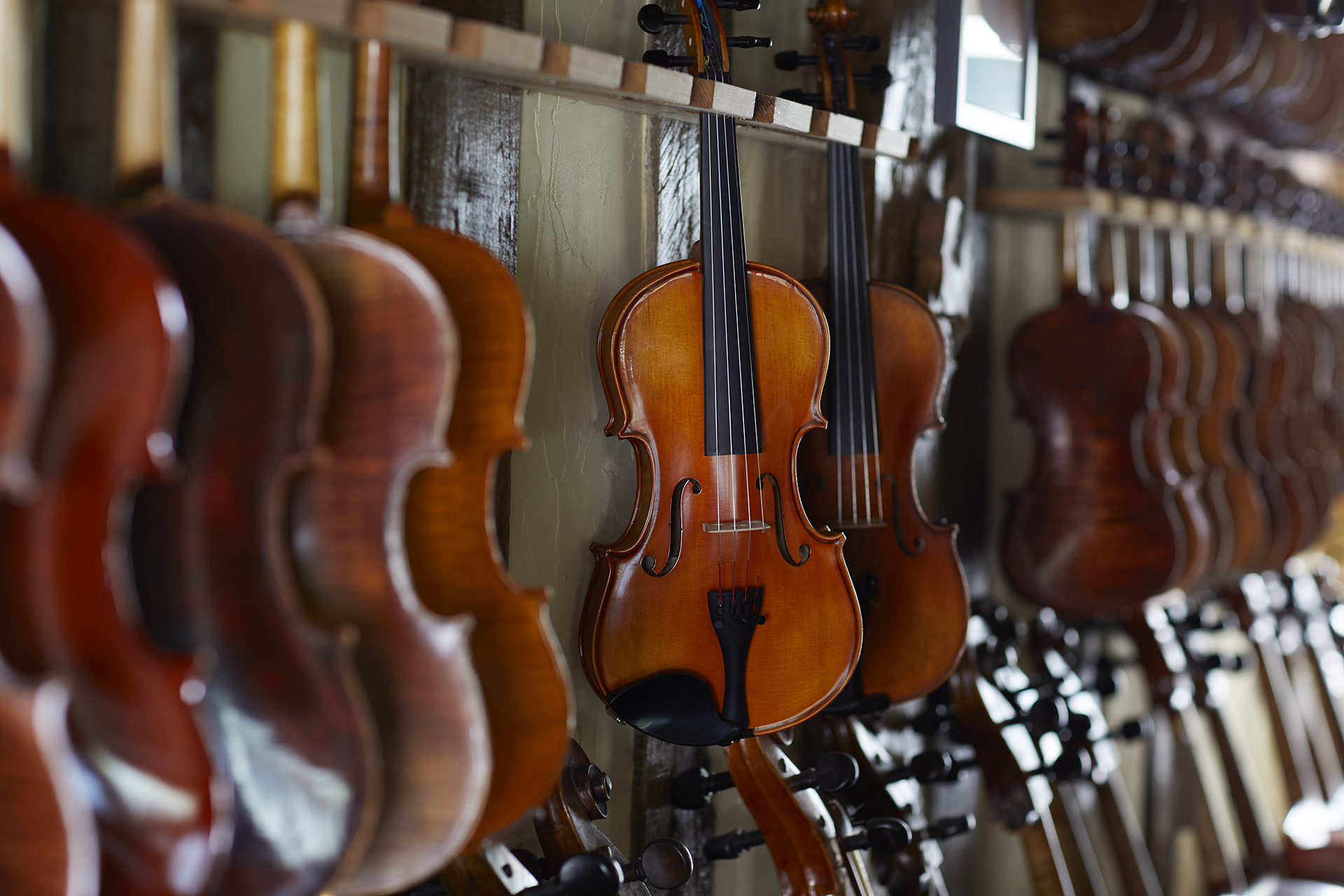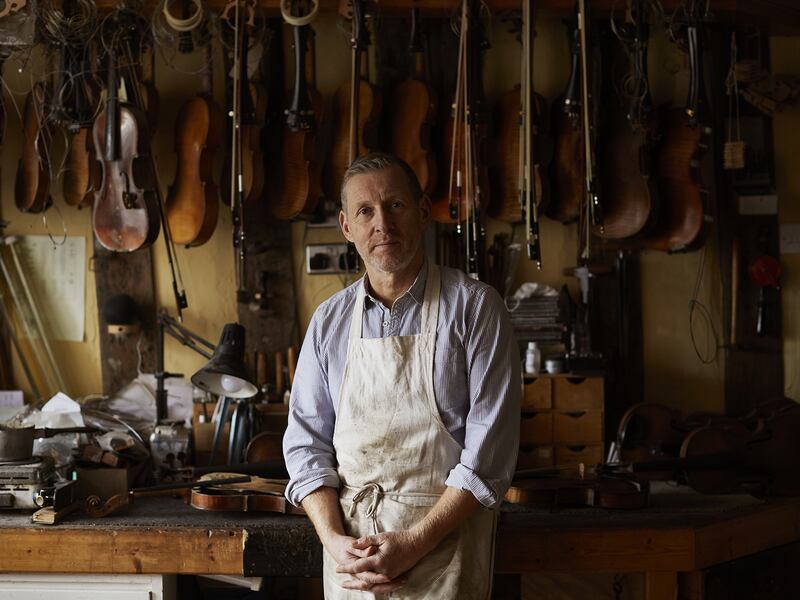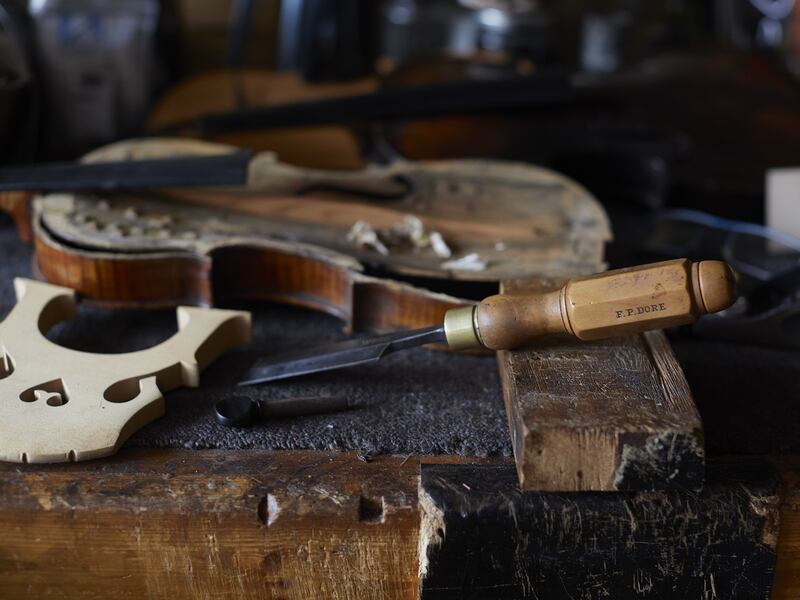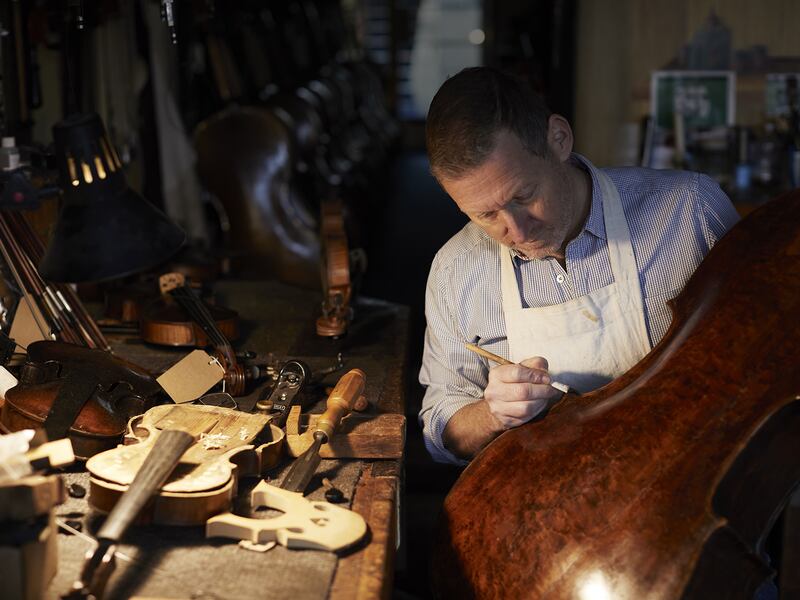
Sitting in his store-cum-workshop, violin maker Russell Stowe smiles as he recalls the start of his career at the renowned Newark School of Violin Making in the English county of Nottinghamshire. “I liked playing the violin and I was reasonable at woodwork, so I decided to go for it. My dad made me wear my school uniform for the interview. I presented well, and got in!”

Stowe was just 16 years of age, but unfazed, when he left his family home to pursue his interest in combining craft with music. “I was maybe a little too young, initially lacking the skill levels of fellow students who arrived from all over the world. The school took a calculated gamble,” he says.
It paid off for both parties. After three years of education at the establishment, he converted his parents’ coach house and set up a workshop. Keen to extend his knowledge, he forged a relationship with a specialist violin shop in a nearby village, eventually working for them full time.
“I learned so much from them and was treated as one of the family. I loved it, but after five years I made the gut-wrenching but obvious step to strike out and set up a violin shop of my own. I would never do anything to compromise them, so I knew I had to move away.”
He settled on Woodbridge in Suffolk, a market town he was familiar with having spent childhood vacations there. After finding an initial rental space, in 1995 he moved Woodbridge Violins to its present location in the town.
Related: Discover Why Top Collectors Are Investing in Works of Craftsmanship

The layout of the store, its feel, and ambience were paramount to Stowe from the get-go. He established the large airy workshop at the front, eschewing the traditional preference for it being hidden away at the back, so passers-by could look in. He wanted a friendly, easy atmosphere where everyone feels welcome, whether buying, browsing, or stopping in for a chat, not the “stuffy, looking-over-the-rim-of-glasses rooms” he knew as a student.
It is a model that has helped Woodbridge Violins become a byword for excellence. “I’ve been a violin maker for more than 30 years, experienced two recessions, a pandemic, and I’ve survived two divorces. I must be doing something right!”
Creating a new instrument takes the violin maker around six weeks, but restoration, valuing, and particularly “finding beautiful instruments” now form the biggest part of his day-to-day life. Requests are varied, from international world-famous clients to those playing for a hobby.
“Professional players and amateurs will come in and ask us to source a violin for them, usually with a wish list. They’ll have a budget of, say, £20,000 ($26,895) and want an instrument with provenance, a specific maker, date, and country of origin.” The search is global, and certain models are hard to find, but Stowe loves the chase. “When I find just what a client is looking for, I get a buzz from it. It’s wonderful to see an owner united with their dream instrument.”
Related: Explore Homes for Classical Musicians, Songsters, and Rock Stars

Violins reign here, but the shop also deals in violas, cellos, and bows. Following last year’s lockdown periods, business is booming—as many customers’ skills improve, they’re looking to upgrade or purchase a second instrument.
Stowe remains, in his words, an average violinist. He was encouraged to take it up by his grandparents—a hobby that became his passion. Is it still a pastime he enjoys? “I play enough in the shop every day! So away from work I like to get outside and go running,” he says, with the thrill of the chase at the forefront of his mind.
woodbridgeviolins.com
Banner image: Violins line the walls of the workshop at Woodbridge Violins in Suffolk, England. Image: Helen Cathcart

